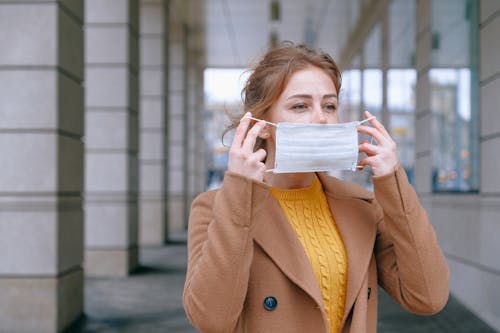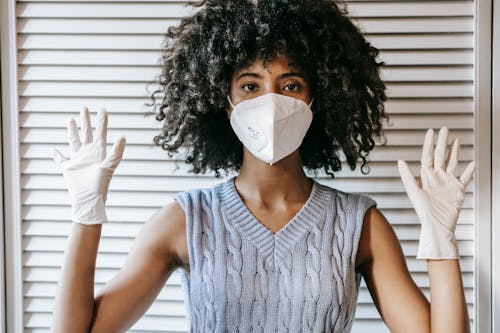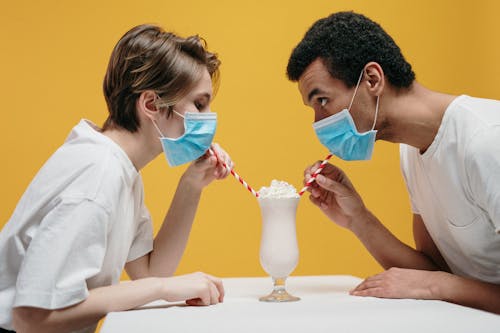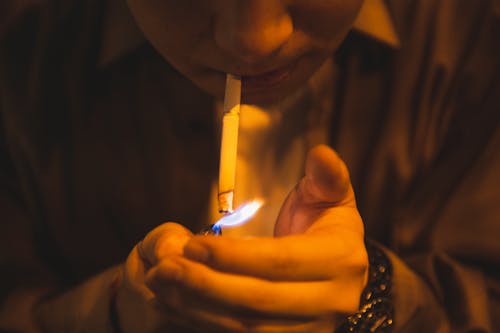One of the things that I have been fascinated by since the very beginning of the pandemic, is the psychological effect that this time is going to have on us. For most generations experiencing it, this is an unprecedented time of stress, dread, upheaval and disruption. The closest experience I imagine in terms of ongoing, sustained dread, would probably be the Cold War era, from what I've hear about it being a time of great uncertainty and lack of control.
But even then, we didn’t have as much access to the news. People went to work and school as normal, just with a sustained threat hanging over the fate of the world. Nowadays, we can’t do those things. The threat has us literally hiding away in our homes.

And I think the emotional and psychological toll that the sense of sustained danger has had is something that is going to be the subject of many studies in years to come.
One such study has recently been conducted in Zurich, Switzerland.
They called the social and economic climate created by the pandemic ‘the perfect storm for increases in emotional distress’, with the uncertainty, ambiguity, and loss of control, triggering internalized symptoms of distress, including anxiety and depression and anger.

The group studied were young adults who were already part of a larger study for the Zurich Project on the Social Development from Childhood to Adulthood. These young adults had been subject to assessments from the age of 7 in order to gather socio-economic data about improvements that could be made to their lived experience. They have been assessed at ages 7, 8, 9, 11, 13, 15, 17, and 20 and most recently, at age 22, when they were 4 weeks into the first Swiss national lockdown, on the 11th of April 2020. Because the group has been tested pre- and during-pandemic, they can be used as a control group to see the effects of the pandemic on young people’s emotional distress ratings.
Young adults are a particularly interesting group to examine, as they are already experiencing a period of uncertainty and stress in their lives, regardless of the pandemic. Their educational or professional journeys are beginning or ending, and their social, romantic and living situations are in flux. They may be entering the job market for the first time, moving out of home, be experiencing financial pressures. And these stresses that are already occurring can be increased due to the pandemic – a declining economic situation, lack of socialisation with friends and romantic partners, being suddenly back in their childhood home, etc. But the main stressor of the pandemic – the actual virus itself – is something that is perceived to be of low emotionally distressing impact ie; getting ill form the virus is not something that is identified as high up on the list of stressors for young people.

It is important to bear in mind that this study is reflective of Swiss students, and the data was logged in the earliest weeks of the pandemic. Our information about and our understanding of the virus and who it does and doesn’t affect has changed. But it is interesting to note that the actual illness itself is considered less stressful than the by-products of the pandemic – socio-economic upheaval.
Therefore, this study focuses mainly on those by-products, measuring a) the responses to these challenges and b) the coping mechanisms used to combat these responses or mitigate pandemic stress. Respondents rated the extent to which they currently felt worse or better compared to before the COVID-19 pandemic using a 10-point scale. Based on this scale, we coded a categorical variable: feeling worse (1–4), feeling approximately the same (5–6), and feeling better (7–10).

The results of pairing up the pre-pandemic answers with the during-pandemic answers found that young adults' perceived stress levels and anger were higher during the pandemic compared to the pre-pandemic assessment.
Important results;
- Lifestyle and economic disruption and feeling hopeless were most strongly associated with emotional distress.
- Economic downturn changes young adults' future outlook, including their visions and hopes for their professional and economic future
- Approximately one in seven participants reported economic disruption.
- Health risks to self or others during the COVID-19 pandemic were only weakly associated with emotional distress
- Females reported higher levels of pre- and also during-pandemic emotional distress compared to males on all indicators.
- Increases in feelings of anger were associated with a low pre-pandemic generalised trust, low concurrent trust in society's responses, and frequent COVID-19-related news-seeking.
- More than one in five reported frequent news-seeking in relation to COVID-19
- Uncertainty, ambiguity, loss of control, social isolation, and worries about health could induce or increase stress and stress-related mental health problems, including internalizing symptoms and anger
- Pre-COVID-19 social stressors may be exacerbated during the pandemic/lockdown, like bullying victimization, stressful life events, and feelings of social exclusion

The implications of these findings tell us many things as parents of teens and young adults that we should be keeping an eye out for.
Firstly, that the coping strategies of keeping a daily routine, positive reappraisal/reframing, engaging in physical activity, acceptance, and keeping in contact with family and friends, can be associated with reduced distress.
Secondly, that this pandemic and the coping mechanisms that we all turn to are opportunities for resilience building. By assembling a mental and emotional health tool kit in times such as these, we will have more long-term success in managing stressful situations rather than turning to some of the more instantaneous coping mechanisms that served as distractions, rather than problem-solving.

Another thing that can be gleaned from this analysis is that health risks to self or others during the COVID-19 pandemic were only weakly associated with emotional distress. This could be due to the fact that only a small percentage of participants was exposed to the most traumatic aspects of the pandemic the Swiss lockdown was effective at ‘flattening the curve’, and at no point during March or April 2020 were hospitals or intensive care units in Zurich overwhelmed.
Flattening the curve may not only reduce risks to physical health but could also have positive downstream effects on mental health. (Again, it is important to bear in mind that this data was logged from April 2020, and that the role we all play in transmission was as of that date, still being uncovered. But it is still important to stress that we could all be transmitting the virus and are all in danger from suffering the consequence of it.)

And finally, one of the most interesting points of the study, was that almost one in five young adults reported feeling better during than before the pandemic. Reasons given for this were the opportunity to decelerate their life, being removed from workplace or educational pressures, more time with family, partners and close friends, spending time on hobbies, and the opportunity to sleep more. This ‘slowed down lifestyle’ (again, something we could appreciate in the earliest weeks of lockdown, and something most of us are probably tired of by now) is something worth investigating however, for future workplace, academic and lifestyle improvements. Until post-pandemic studies can be conducted however, the data is insufficient to equivocally say how exactly some of this ‘slowed down’ life might manifest and improve lifestyles.
(Shanahan, L., Steinhoff, A., Bechtiger, L., Murray, A., Nivette, A., Hepp, U., . . . Eisner, M. (2020). Emotional distress in young adults during the COVID-19 pandemic: Evidence of risk and resilience from a longitudinal cohort study. Psychological Medicine, 1-10. doi:10.1017/S003329172000241X)





